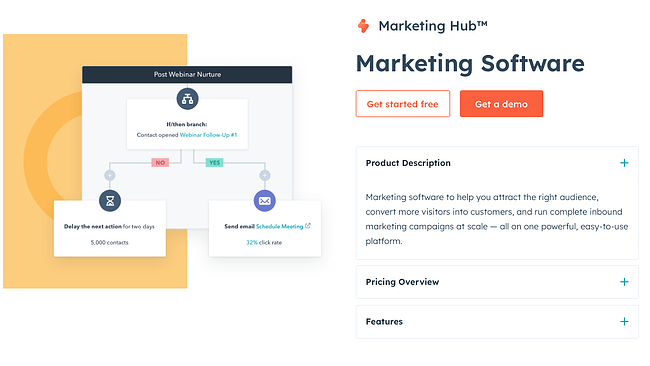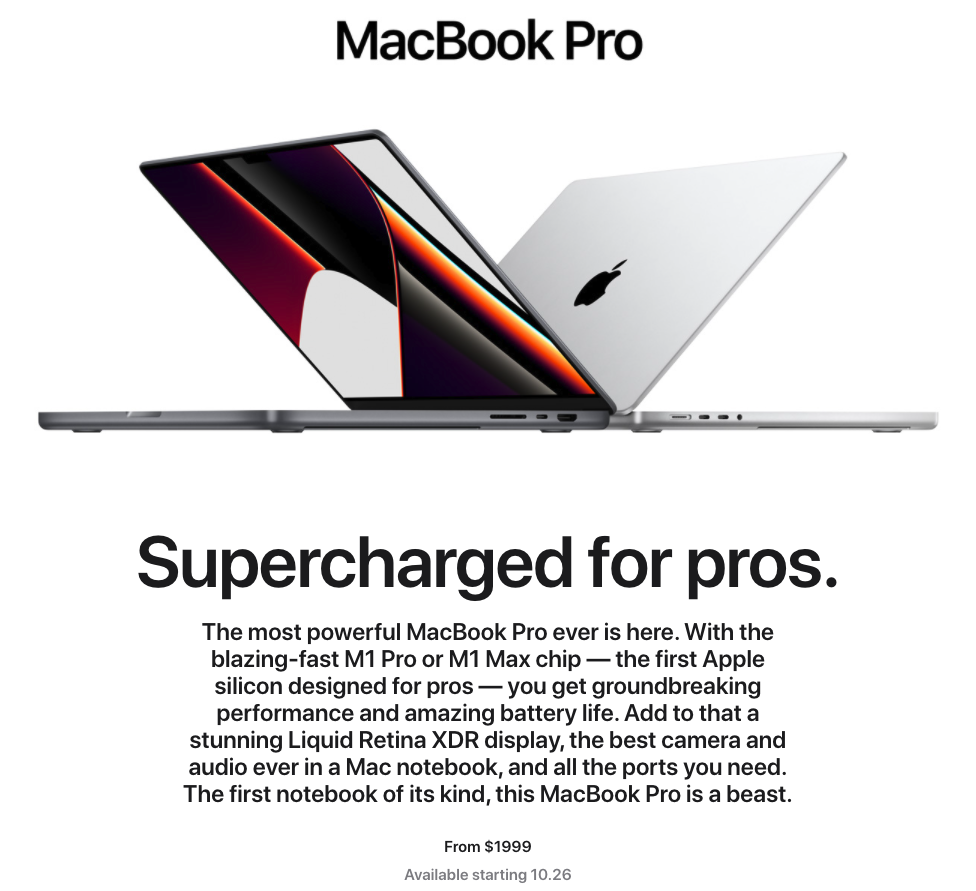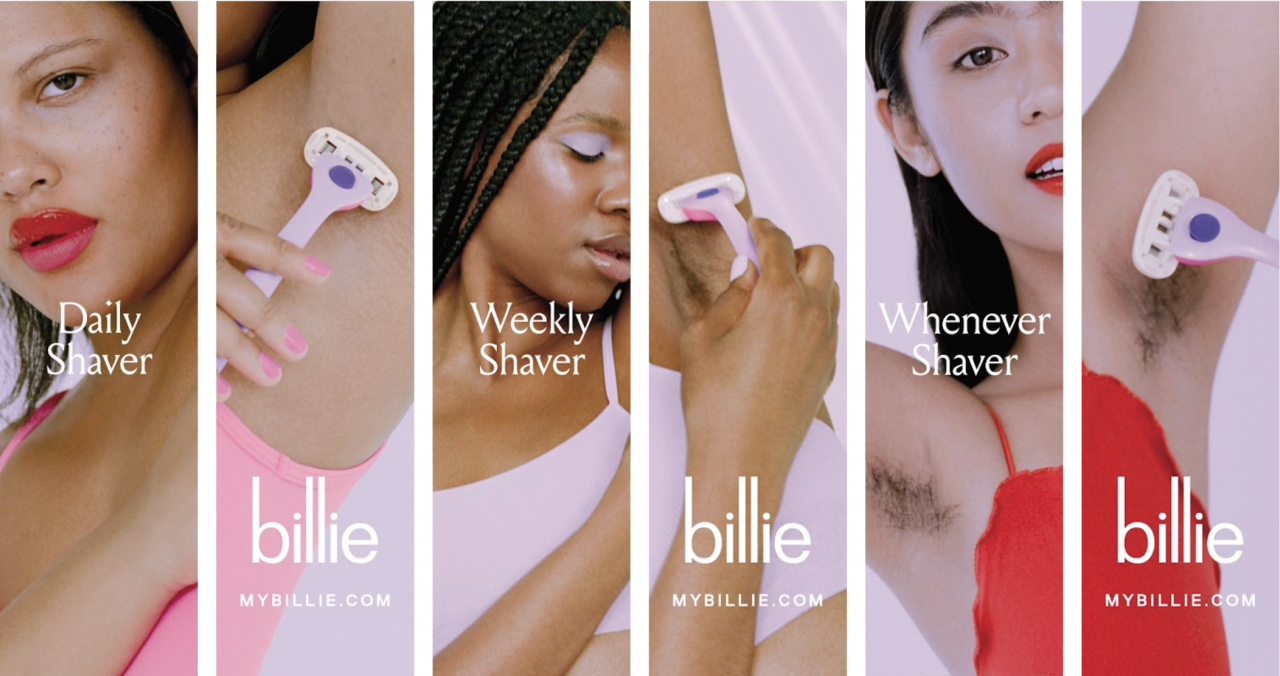MARKETING
The Ultimate Guide to Product Marketing in 2023

Product marketing is essential, even if you only sell one or two products at your organization.
But what is product marketing? How do you market a product, and how does that differ from conventional marketing strategies? Let’s find out.
What is product marketing?
Product marketing is the process of bringing a product to market, promoting it, and selling it to a customer. Product marketing involves understanding the product’s target audience and using strategic positioning and messaging to boost revenue and demand for the product.
What makes product marketing unique? How is it different from conventional marketing? Let’s unpack the differences.
Product Marketing vs. Conventional Marketing
Product marketing is strategic whereas conventional marketing is all-encompassing.
Product marketing is considered a component of conventional marketing. In fact, if you look at the seven Ps of marketing, you’ll see product marketing is one of the most important aspects of a business’s marketing efforts.
Product marketing is about understanding a specific product’s audience deeply and developing that product’s positioning and messaging to appeal to that audience. It covers the launch and execution side of a product in addition to the marketing strategy for the product — which is why the work of a product marketer lies at the center of a business’s marketing, sales, and product teams.

Conventional marketing is focused on broader topics under the umbrella of marketing, such as lead generation, SEO, and anything related to acquiring and converting new leads and customers. It’s about promoting the company and brand as a whole, including the products sold. These marketers make sure there’s a consistent, on-brand message behind all of the company’s content.
To understand it better, let’s look at product marketing goals.
Product Marketing Goals
Product marketing is focused on driving demand for and adoption of a product among existing customers. It’s focused on the steps people take to purchase your product so product marketers can build campaigns to support this work.
Usually, product marketing is executed with several goals in mind:
1. Understand your customers better.
When you implement a product marketing strategy, your target audience can see the value of having that specific product in their lives. Understanding how many customers gravitate to your product lets you conduct customer research.
2. Target your buyer personas effectively.
Alongside understanding your customers, you can figure out the type of buyer persona to target in the future. Knowing the exact needs of your target can help you when innovating your product to better suit their needs.
3. Learn about your competitors (products and marketing tactics).
When you market your product, you can compare your strategy and results to your competitors. What features and benefits of their products make a statement within the market? What ideas haven’t they explored? What does their product offer that yours doesn’t? You can use this research to your advantage when crafting your product marketing strategy.
4. Ensure the marketing, product, and sales teams are all on the same page.
Making your product offering abundantly clear for buyers and employees is mutually beneficial. Every team working together in your business can better understand the product’s purpose and better communicate that in their operations.
5. Position the product appropriately in the market.
In product marketing, you want your product, brand image, and tone consistent and evoke the right feelings intended for your audience. When you brainstorm your brand positioning, some questions to consider are:
-
Is this product suitable for today’s market?
-
How is this product different from our competitors’?
-
Can we further differentiate this product from our competitors’ offerings?
-
Are there any products we’ve sold in the past that we wouldn’t market or sell again? If so, why not?
6. Boost revenue and improve sales.
There are also questions you, as a product marketer, will have to ask yourself and reflect on regregardyour product. Asking yourself these questions will help you ensure your product is successful among customers.
-
Is this product suitable for today’s market?
-
Is this product appropriate for our customers today?
-
How is this product unique from similar productstof our competitors?
-
Is there a way to further differentiate this product from our competitors?
-
Are there any products we’ve sold in the past that we wouldn’t market or sell ever again now that we look back? If so, why not?
As you can see, product marketing requires you to look at your products strategically to ensure they’re successful among customers in your current market.
Why is product marketing essential?
Product marketing is a critical part of any business’s marketing strategy. Without it, your product won’t achieve its maximum potential among your target audience.
To illustrate its importance, let’s look at an example of successful product marketing. During the 1950s, Volkswagen sold a bus. Although now considered a classic vehicle, the bus remains an icon for the car company decades later.
The cool part? Volkswagen announced their new VW Bus — it’s electric and features sleek, modern styling. Volkswagen’s marketing for the vehicle is eye-catching, unique, and fun, and it complements the original “hippie” vibe the company was once known for.

Volkswagen also released a TV commercial for the bus that’s clever, minimalist, and on-brand. It introduces the new vehicle with the song The Sound of Silence playing in the background (hint: electric cars are silent) and ends with a short message on the screen for viewers to read: “Introducing a new era of electric driving.”
This sentiment touches on the fact Volkswagen is contributing to society’s interest in electric, eco-friendly vehicles. It also relates to this being a new era for the bus.
This is why product marketing is important: Because it highlights not the company but the product itself, ensuring longevity in the market.
But who works on this type of marketing? Who helps create content that excites consumers about new and updated products, like the Volkswagen bus? Who encourages consumers to buy? Product marketers.
Now, let’s take a look at the specific responsibilities that product marketers (or product marketing managers) face in their typical day.
Product Marketing Responsibilities
- Identify the buyer personas and target audience for your product.
- Successfully create and carry out your product marketing strategy.
- Work with and enable sales to attract the right customers for your new product.
- Determine your product’s positioning in the market.
- Ensure the product meets the needs of your target audience.
- Keep your product relevant over time.
Your responsibilities as a product marketer may vary slightly based on industry, company, products, and company size and resources. If you’re working for a startup, you may be a product marketer who also helps create the content the broader marketing team produces due to limited resources and budget. As the business grows, you may move onto a team whose sole job is product marketing.
Let’s take a look at six common product marketing responsibilities.
1. Identify the buyer personas and target audience for your product.
You must identify the buyer personas and audience for your product so you can target customers in a convincing way that makes them want to purchase. This will allow you to tailor your product and its features to solve your audience’s challenges.
Pro tip: Use templates to create buyer personas for your business. A tangible outline of whom you’re catering to can help align different teams in your business and better position your product in the marketplace.
2. Successfully create, manage and carry out your product marketing strategy.
A product marketing strategy (which we’ll review shortly) allows you to create, build, and execute content and campaigns — this supports the steps that will lead your buyer personas and customers to make a purchase.
3. Work with and enable sales to attract customers for your new product.
As a product marketer, you have to mamusta direct relationship with sales. You’ll work with sales to identify and attract the right customers for the product at hand and provide sales enablement materials to reps to ensure they understand the product inside and out, along with its features.
This way, you and your teams are on the same page in termregarding being shared with customers, allowing you to provide a consistent, on-brand experience for anyone who comes in contact with the product.
4. Determine your product’s positioning in the market.
One of the most important parts of your job is determining the product’s positioning in the market. Think about this process in terms of storytelling — your positioning requires you to create and tell the story of your product.
As a product marketer, you’ll work with the broader marketing team and the product team to tell this story by answering critical questions like:
-
Why was this product made?
-
Whom is this product made for?
-
What challenges does this product resolve?
-
What makes this product unique?
5. Ensure your product meets the needs of your target audience.
You must also make sure your product meets the needs of your customers and target audience. Through the research to determine your buyer persona and target audience, you should have uncovered the pain points and challenges you’re working to solve with your product.
If your product doesn’t meet thyour customers’ needsthey’ll have no reason to make the purchase or choose your product over your competitor’s.
6. Keep your product relevant over time.
Your product needs to stay relevant over time. As needs, expectations, and challenges change and evolve, it’s your job to ensure your product marketing strategy and the products themselves remain relevant among customers.
This means you may have to manage slight changes in your product marketing strategy (which we’ll discuss next) or updates and modifications to the product itself (you’ll likely work with the product team, which creates the effect, to do this).
7. Guide marketing strategies for new products.
In product marketing, you’ll need to pay close attention to what worked in your strategy and what didn’t so you can better plan marketing strategies for new and future products. Pay attention to where your audience is and what they are looking for. What channels got the most traction and led to more converted leads?
All this information and more should be applied to marketing strategies for new products.
Product Marketing Strategy
Your product marketing strategy serves to guide the positioning, pricing, and promotion of your new product. It helps you take your product from development to launch and informs what new audience(s) and markets to which to launch and market your product.
Now, let’s take a look at five steps that can help you optimize your product marketing strategy.
1. Define your product’s target audience and buyer personas.
As a product marketer, one of the main roles you have is to define a specific target audience and create buyer personas for the product being sold (different products will likely have different target audiences). This is the first step to marketing your product.
By understanding your customers and their needs, challenges, and pain points, you’ll be able to end that all aspects of your product marketing strategy (as in the rest of the steps we’ll define below) are tailored to that target customer and persona. This way, the product and the marketing content created for the product will resonate with your audience.
2. Determine the positioning and messaging to set your product apart.
After your customer research and learning about your audience, you’ll have identified their needs, challenges, and pain points. From here, you can think about how to highlight the ways your product resolves those challenges for your customers.
However, that doesn’t necessarily mean you’ve differentiated yourself from your competitors. After all, they are your competitors because they solve your customers’ needs in a similar way to your company.
The key to setting your product apart is positioning (which we touched on earlier) and messaging. Posi—positioningessaging answers key questions your customers might have about your product and what makes it unique and th,en turns those answers into the main points behind your product’s marketing strategy.
It’s your job as the product marketer to ensure your customers and audience know the answers to these questions and don’t have to dig around for (or make assumptions about) them.
Examples of questions you’ll need to answer to develop your product’s positioning and messaging include the following:
-
What specifically makes our product unique?
-
Why is our product better than our competitors’?
-
Why are our product’s features ideal for our target audience?
-
What will our fromers get out of our product that they cannot get from our competitors’ products?
-
Why should our customers trust and invest in us and our product?
Once you’ve answered these questions, you can compile these responses into one, impactful and shareable statement that captures your positioning and messaging To do this, follow these steps:
-
Turn the answers to the positioning and messaging questions into an elevator pitch.
-
Use action words to excite your customers.
-
Ensure the tone of your statement captures the style of your brand.
-
Focus on the benefit of your product as a whole (not just one specific feature).
Pro Tip: As product marketers, you should ensure the sales, product, and (the broader) marketing teams are also aware of your positioning and messaging around the product so they, too, can communicate the same information to prospects and current customers.
This allows you to ensure the entire company is consistent in the content and information they share about your product. Additionally, you can provide this information to your support team if you think it’s necessary, as they may be fielding support calls and working with your customers who’ve already invested in the product.
3. Set goals for your product.
Next, you’ll want to set goals for your product. These will vary based on your specific product, the type of company you work for, your overall marketing goals, and more — your goals will be specific to your business and situation. However, let’s review some common goals product marketers aim to achieve:
Pro Tip: Feel free to combine several goals or choose one to focus on — every company and product will have different plans. The key is ensuring you view and set these targets in the SMART goal format, meaning they’re specific, measurable, attainable, realistic, and time-bound.
Use a free template to help you create and achieve your SMART goals.
4. Price your product.
As a product marketer, you’ll also have to contribute to the discussion of the price of your product. Depending on your company, you might work with other teams on this part of the strategy, or it might be a job just for you and your fellow product marketers. Either way, you can consider competitive vs. value-based pricing.
Competitive vs. Value-Based Product Pricing
Competitive pricing means you’re basing your product’s price off similar products your competitors sell. It’s ideal for companies that have an effect similar to one that several other companies sell.
Suppose you believe your unique features warrant a significantly higher price e of your competitors’. In that case, you might price your product above the other similar products on the market. An excellent way to evaluate the fairness of the pricing of all of your competitors is by studying financial reports and industry trends.
Value-based pricing allows you to maximize your profit, although it’s a bit more time-consuming to establish in comparison to competitive pricing. It’s ideal for companies selling a product with very few competitors on the market or one with exceptionally new and unique features.
Value-based pricing quantifies your item’s value in a way your customer can relate to their profitability. It allows you to base your product’s price on its value for your customer rather than whatever the market, industry trends, and your competitors say.
5. Launch your product.
Now it’s time for the most impoessentialt of your role as a product marketer — not to mention, the most exciting: the launch of the product you’ve been marketing.
There are two main parts to the launch to focus on as a product marketer: the internal launch (what goes on within your company upon product launch) and the external launch (what goes on outside of your company, with customers and audience members, upon product launch).
Internal Aspects of a Product Launch
As previously stated, your job as a product marketer entails ensuring the entire organization is on the same page about your product. This way, your customers only receive consistent and accurate details about the product.
The marketing, product, and sales teams at your company should be aware of the following information:
-
The product’s benefits
-
Any available product demo information
-
Sales training opportunities on your product and details about how it’s used
-
What the positioning and messaging looks like
-
Who your buyer personas, and ideal customers are
-
What the goals for your product include
-
What your product’s features are
-
The pricing of your product
-
How your product is being launched to customers
Now, you might be wondering how to provide this information to marketing, product, and sales. Which channels are ideal for sharing these details with your fellow employees?
Here are a few examples of ways to do this:
External Aspects of a Product Launch
Externally, there are many ways to market your product launch so your current base of customers, prospects, and target audience learn about whatever it is you’re selling.
First, determine where you’re going to focus your product marketing efforts. Here are some examples of channels and places to do this (you might choose several of these or just one to focus on depending on your needs, goals, and resources).
On whatever channel you choose to focus your product launch marketing efforts, you should include relevant product information (focused on your positioning and messaging) so prospects and customers can learn all about your product and why they need it. This includes your product’s features, what makes it unique, pricing, demos for customers, training for customers, and any other materials you’ve created and want to share.
Congrats! You’ve just worked through the steps to marketing a product. Remember, this process is one that should be thought about and updated as your products change and evolve so they remain relevant among your customers. (This shouldn’t be an issue as long as you have a member of your team focused on product marketing, considering it’s one of their main responsibilities.)
Now that you know how to create a product marketing strategy, how do you market a product across your channels? Let’s take a look.
How to Market a Product
- Create a product marketing deck for other marketing teams.
- Publish product-focused content on your blog.
- Insert product mentions naturally in your existing marketing collateral.
- Try comarketing with a similar brand.
- Launch PPC ads and bid on your and competitors’ keywords.
- Focus on the benefits, not the features.
1. Create a product marketing deck for other marketing teams.
Non-product marketers — i.e, social media marketers and content marketers — won’t have the full know-how on your product, impeding them from marketing it properly on customer-facing channels. As a product marketer, your job isn’t necessarily to execute marketing campaigns or write content. Instead, your job is to enable specialized teams — such as your social media and content team — to market your company’s products effectively.
The first step is to provide a deck, presentation, or document that outlines your product marketing strategy to other marketers. That way, when it’s time to execute on a strategy, they know the positioning they are aiming for, the wording they are to use, and the personas they are targeting.
2. Publish product-focused content on your blog.
A blog is primarily a place to attract inbound leads. Rather than trying to hammer them with information about your product, you might write content that helps them solve an issue instead, and then offer them a free guide or ebook to help them further.
But did you know that your team can publish content that attracts inbound leads and encourages purchases and sign-ups? At HubSpot, we call this product-focused content. It’s just as helpful as our other content, but with a critical difference: It has a call-to-action to try one of HubSpot’s products.
For instance, our blog post, What is a CMS and Why Should You Care?, aims to inform readers about content management systems, but then includes a call-to-action to try CMS Hub.

While the blog post is still informative and not overtly promotional, it still promotes one of our products. In the same way, you or your content team can write helpful content for your readers, help them the inbound way, and still encourage customers to try your offerings.
3. Insert product mentions naturally in your existing marketing collateral.
If you’ve had a longstanding marketing strategy prior to beginning product marketing, we have good news: You can retroactively market your product in existing collateral. For instance, if you already have an expansive library of blog posts, you can update them with information about your products (so long as the mention is natural).
Recent social media posts can also be candidates for an update, and your website content should also change to show your brand new product. Internal links from related pages can help drive traffic to your new product pages.
In addition, if your marketing team has created marketing offers in the past, you can have them update the offer and add a call-to-action to try your newest product — like in this example from HubSpot’s Case Study Templates offer, where we prompt users to try CMS Hub.

4. Try comarketing with a similar brand.
Comarketing is an excellent way to market your product to a related audience. You can do something as simple as filming a video together, writing a collaborative blog post, posting on each other’s social channels, or running a webinar.
Your product should be an excellent match for the other company’s customers. Ideally, both of your products can be used in conjunction and not compete directly. For instance, Ankor Software and HubSpot partnered for a webinar, but Ankor Software doesn’t compete with HubSpot CRM — it complements it.
5. Launch PPC ads and bid on your and competitors’ keywords.
Pay-per-click (PPC) is an essential product marketing tactic. While content and social media marketing can help you attract inbound leads, you can get the attention of even more potential customers by posting PPC ads on search engines.
When setting up your PPC campaign, bid not only on general product keywords (such as “crm software” or “[insert category]”), but on your own branded terms and your competition’s as well. That way, customers who are considering purchasing the same product from a competitor will consider you as an alternative.
6. Focus on the benefits, not the features.
Regardless of the channel or platform you’re promoting your product on, highlight the benefits customers will experience, not the features of your product. Not only can features feel jargony (like “Customizable attribution models” or “Automated contact workflows”), but they shroud the benefits and alienate non-technical customers.
Try, instead, leading with the benefits, such as “Know where exactly your leads come from” or “Save time by automating tasks using contact workflows.” For instance, on the Marketing Hub page, the features snapshot reads:
“Attract visitors through blogging, social media, ads, and more. Convert visitors into customers with landing pages, email, marketing automation, ABM, and more. Track ROI with revenue attribution reporting. All powered by the customer data in your CRM to enable personalization at scale.”

Using benefit-first language will engage customers and prompt them to try your products. The “how” of the benefit — such as features or functionalities — come after.
Product Marketing Examples
- Apple
- Billie
- Coca-Cola
- MailChimp
Let’s review four real-life examples of stellar product marketing.
1. Apple
Apple is a household name for leading technology products and software. Not only are its products gorgeously well-designed; it’s also super useful. But Apple’s product marketing doesn’t focus on the many product features — it markets the user benefits.

Apple doesn’t simply list the impressive features of their products; the brand uses those features to tell consumers who they could be and how they could work if they have those products. Apple tells a narrative using its products and encourages people to buy in the process.
2. Billie
Billie is a women’s razor brand. In a highly competitive market, Billie has helped its products stand out. How? It established a sharp competitive edge (no pun intended) by doing what no razor brand had done before — show body hair in its advertising.

Not only did this advertising approach get Billie’s audience talking about the brand, but they also appreciated the brand’s accurate portrayal of women’s bodies and body hair. These differentiators were more than enough to set Billie apart from other razor brands and products.
3. Pepsi Cola
As a brand, Pepsi has positioned itself as one with youthful energy and excitement, and this can be seen consistently through its product marketing campaigns.
Pepsi’s customers are mainly aged between 13 and 35 years old with modern and active lifestyles, so it only makes sense to hire popular celebrities like Doja Cat for a commercial in a homecoming tailgate.

Through highly targeted positioning, repetitive advertising, and consistent branding, Pepsi has become a truly global household name and product.
4. MailChimp
There are dozens of email marketing tools on the market, but MailChimp hasn’t been fazed by competition. In fact, the company has risen above its competition by positioning itself as more than an email marketing tool: it’s an all-in-one marketing platform that helps businesses grow.

Like Apple, MailChimp primarily highlights its benefits for the end-user, not just its product features. A recent rebranding and site redesign further drives this narrative home.
Start Marketing Your Products
Product marketing is the process through which a company brings a product to market. Being a product marketer (or product marketing manager) means you’re at the center of your company’s marketing, sales, and product teams.
You’re an integral part to the success of your product, as you create and manage your product’s specific marketing strategy, but you also serve as a liaison between all three of these departments, ensuring everyone is on the same page with your product, it’s features, capabilities, and more. So, start developing your latest product’s marketing strategy to ensure it’s a success among your target audience and customers.
This post was originally published in February 2020 and has been updated for comprehensiveness.





















You must be logged in to post a comment Login